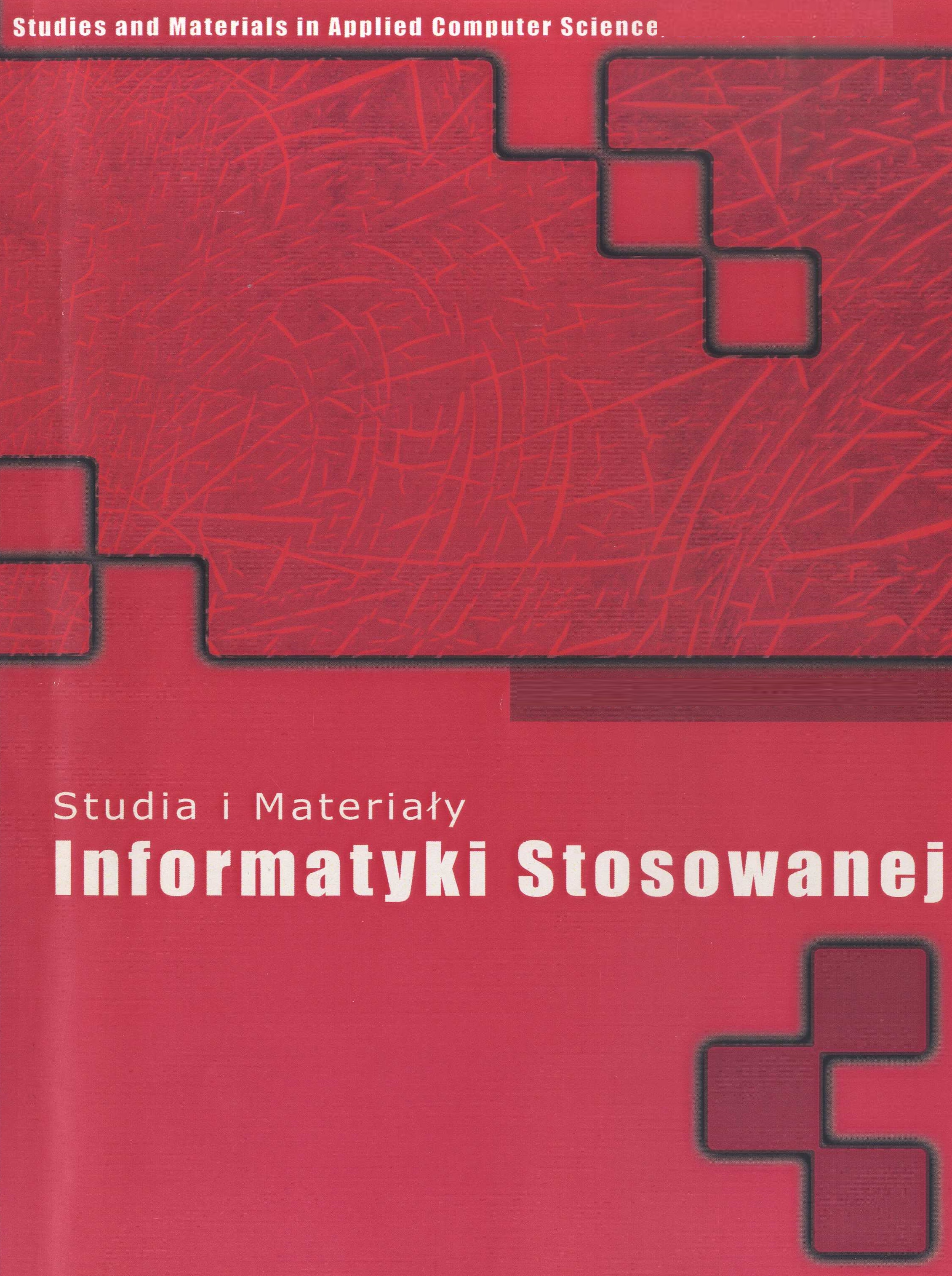Wearable devices in clinical gait analysis
DOI:
https://doi.org/10.34767/SIMIS.2018.01.01Słowa kluczowe:
systemy mobilne, eZdrowie, urządzenia do noszenia, analiza chodu, kliniczna analiza chodu.Abstrakt
Mobilna, efektywna, dokładna, szczególowa, wczesna i tania kliniczna analiza chodu ma kluczowy wpływ na planowanie,postęp i ocenę strategii i modeli rehabilitacji, jak również przedmiotów zaopatrzenia ortopedycznego. Nowe rodziny mobilnych rozwiązań do klinicznej analizy chodu mogą zapewnić wczesniejsze wykrywanie, dokładniejszą diagnostykęoraz efektywniejszą terapię deficytów chodu. Zdalna integracja ww. rozwiązań ze szpitalnym systemem informacyjnym może zapewnić lepszą i aktualniejszą wiedzę na potrzeby klinicznego podejmowania decyzji. Niniejszy artykuł stanowi przegląd urządzeń do pomiaru wybranych parametrów chodu, w zależności od poządanej dokładności.
Bibliografia
Tao W., Liu T., Zheng R., Feng H. Gait analysis using wearable sensors. Sensors (Basel). 2012;12(2):2255-83.
Cutti A. G., Raggi M., Andreoni G., Sacchetti R.Clinical gait analysis for amputees: innovation wishlist and the perspectives offered by the outwalk protocol. G Ital Med Lav Ergon. 2015; 37 Suppl(3):45-8.
Schmid S., Studer D., Hasler C. C., Romkes J., Taylor W. R., Brunner R., Lorenzetti S. Using skin markers for spinal curvature quantification in main thoracic adolescent idiopathic scoliosis: an explorative radiographic study. PLoS One. 2015; 10(8):e0135689.
Barré A., Jolles B. M., Theumann N., Aminian K. Soft tissue artifact distribution on lower limbs during treadmill gait: Influence of skin markers' location on cluster design. J Biomech. 2015; 48(10):1965-71.
Bachlin M., Plotnik M., Roggen D., Maidan I., Hausdorff J. M., Giladi N., Troster G. Potentials of enhanced context awareness in wearable assistants for Parkinson’s disease patients with the freezing of gait syndrome. IEEE Trans. Inf. Technol. Biomed. 2010; 14:436–46.
Han J., Jeon H. S., Yi W. J., Jeon B. S., Park K. S. Adaptive windowing for gait phase discrimination in Parkinsonian gait using 3-axis acceleration signals. Med. Biol. Eng. Comput. 2009; 47:1155–64.
Grandez K., Bustamante P., Solas G., Gurutzeaga I., Garcia-Alonso A. Wearable wireless sensor for the gait monitorization of parkinsonian patients. Proceedings of the 16th IEEE International Conference on Electronics, Circuits, and Systems; Yasmine Hammamet, 2009; pp. 215–218.
Jovanov E., Wang E., Verhagen L., Fredrickson M., Fratangelo R. deFOG—A real time system for detection and unfreezing of gait of Parkinson’s patients. Proceedings of the Annual International Conference of the IEEE Engineering in Medicine and Biology Society; Minneapolis, 2009; pp. 5151–4.
Salarian A., Russmann H., Vingerhoets F. J., Dehollain C., Blanc Y., Burkhard P. R., Aminian K. Gait assessment in Parkinson’s disease: Toward an ambulatory system for long-term monitoring. IEEE Trans. Biomed. Eng. 2004; 51:1434–43.
Lopez-Meyer P., Fulk G. D., Sazonov E. S. Automatic detection of temporal gait parameters in poststroke individuals. IEEE Trans. Inf. Technol. Biomed. 2011; 15:594–600.
Stokic D. S., Horn T. S., Ramshur J. M., Chow J. W. Agreement between temporospatial gait parameters of an electronic walkway and a motion capture system in healthy and chronic stroke populations. Am. J. Phys. Med. Rehabil. 2009; 88:437–444.
Aminian K., Najafi B. Capturing human motion using body-fixed sensors: Outdoor measurement and clinical applications. Comput. Animat. Virtual Worlds. 2004; 15:79–94.
Atallah L., Jones G. G., Ali R., Leong J. J. H. , Lo B., Yang G. Z. Observing recovery from kneereplacement surgery by using wearable sensors. Proceedings of the 2011 International Conference on Body Sensor Networks; Dallas 2011; pp. 29–34.
Filho M. C., Yoshida R., Carvalho Wda S., Stein H. E., Novo N. F. Are the recommendations from threedimensional gait analysis associated with better postoperative outcomes in patients with cerebral palsy? Gait Posture. 2008; 28:316–322.
Cook R. E., Schneider I., Hazlewood M. E., Hillman S. J., Robb J. E. Gait analysis alters decision-making in cerebral palsy. J. Pediatr. Orthop. 2003; 23:292– 295.
Gage J. R., Novacheck T. F. An update on the treatment of gait problems in cerebral palsy. J. Pediatr. Orthop. Part B. 2001;10:265–274.
Wahab Y., Bakar N. A. Gait analysis measurement for sport application based on ultrasonic system. Proceedings of the 2011 IEEE 15th International Symposium on Consumer Electronics; Singapore 2011; pp. 20–24.
Ghasemzadeh H., Jafari R. Coordination analysis of human movements with body sensor networks: A signal processing model to evaluate baseball swings. IEEE Sens. J. 2011; 11:603–610.
Ghasemzadeh H., Jafari R. Sport training using body sensor networks: A statistical approach to measure wrist rotation for golf swing. Proceedings of the Fourth International Conference on Body Area Networks (BodyNets 09); Los Angeles 2009.
Nyberg L., Gustafson Y. Fall prediction index for patients in stroke rehabilitation. Stroke. 1997; 8:716– 21.
Jensen J., Lundin-Olsson L., Nyberg L., Gustafson Y. Fall and injury prevention in older people living in residential care facilities: A cluster randomized trial. Ann. Intern. Med. 2002;136:733–41.
Auvinet E., Multon F., Aubin C. E., Meunier J., Raison M. Detection of gait cycles in treadmill walking using a Kinect. Gait Posture. 2015; 41(2):722-5.
Springer S., Yogev Seligmann G. Validity of the Kinect for Gait Assessment: A Focused Review. Sensors (Basel). 2016; 16(2):194.
Xu X., McGorry R. W., Chou L. S., Lin J. H., Chang C. C. Accuracy of the Microsoft Kinect for measuring gait parameters during treadmill walking. Gait Posture. 2015; 42(2):145-51.
Clark R. A., Bower K. J., Mentiplay B. F., Paterson K., Pua Y. H. Concurrent validity of the Microsoft Kinect for assessment of spatiotemporal gait variables. J Biomech. 2013; 46(15):2722-5.
Mikołajewska E., Komendziński T., Dreszer J., Bałaj B., Mikołajewski D. Role of toys in the development of healthy infants. J. Educ. Health Sport 2015; 5(4):219-23.
Mikołajewska E., Komendziński T., Dreszer J., Bałaj B., Mikołajewski D. Role of toys in the development and rehabilitation of children with developmental disorders. J. Educ. Health Sport 2015; 5(4):224-8.

